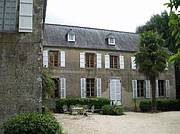Unfortunately, the unusually spring-like weather of last weekend made the track unfit for skiing on the second day of the competition, which is when we planned to view the events. Instead we were treated to a game of snow polo, which was also quite interesting.
In other news Annabel has been perfecting a decidedly warmer winter pastime - baking. Friends Natalie and Annabelle(!) visited last weekend to bake some rather delicious cupcakes.
Annabel is becoming a lot of fun, although I did have a bit of a "moment" concerning her last week. The principal of her school phoned unexpectedly to let me know that Annabel was sitting in his office, and that he wished to discuss her behavior with me. GULP! This was a surprise, to say the least. He strung me along for a moment or two before bursting into laughter.
He was actually calling to let me know that several of Annabel's teachers had nominated her for a "Preferral of Awesomeness" award for her hard work, being an exemplary student, helping others and always smiling. Once I recovered my composure, I thanked him for the call and congratulated Annabel. We are really proud of her!











